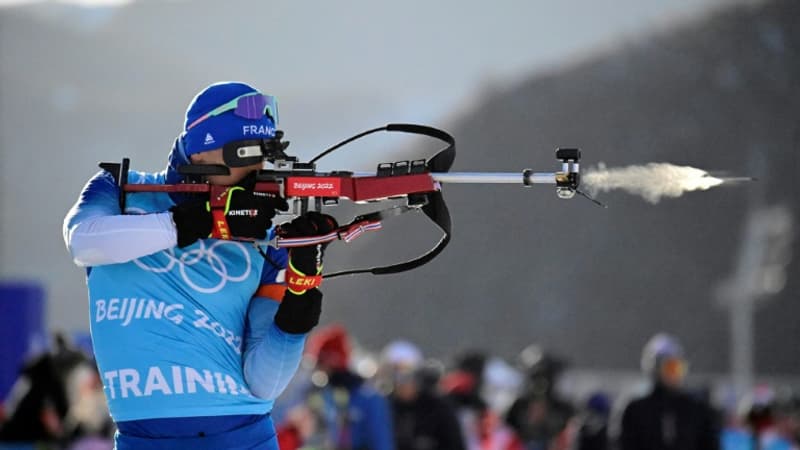Television on, phone in hand and eyes moving from one screen to another: Christophe has what we can commonly call almost “normal” behavior. With one detail: on his phone, the data moves non-stop. The minutes that pass, the objectives that change (or not), the intervals between each runner: the web developer carefully watches the “data center”, an interface that gathers in real time all the data related to biathlon races, this sport that combines cross-country skiing and rifle shooting.
With one goal: to find unusual or unpublished data that will feed his Twitter account @biathstats where the 48-year-old from Toulouse has fun every day revealing statistics related to this winter sport.
On this site open to all, you can find a lot of information, both during the race with real-time indicators (gaps with the leader, number of shooting errors, position of the athlete on the track, etc.) but also after the races (hit percentage in the two shooting positions, classification by discipline, best performances by athlete, etc.).
data room
And for this, Christophe uses his collection of data accumulated race after race and that he retrieves from “realbiathlon”, the mecca of data related to this sport. The site lists thousands of data from the IBU, the international biathlon federation, from the 1950s to the current season’s races, making it possible to offer tables, graphs and rankings accessible to all.
A site that even offers several monthly subscriptions from 1 to 7 euros per month to efficiently retrieve the data (in programming language) and improve the statistics and analysis of the fans, but especially of the coaches and athletes of all the teams of the circuit, like the selection of France.
Vincent Vittoz, coach of the French men’s biathlon team, for example, uses real-time IBU data during races to look at differences between each athlete and then “realbiathlon” data for reporting. A way for him to see the evolution lap after lap, to calibrate the management of the races but above all to help the biathletes to go towards a good performance.
However, using this data remains a great challenge, with permanent contextualization according to the conditions of each race: concerns about equipment, weather conditions or the physical conditions of the athletes. “It is a tool but you have to know how to use it. You have to know how to isolate what is important. Above all, you have to know how to manage the human being ”, underlines the Blues coach, questioned before the game of the penultimate stage of the season in Östersund (Sweden).
4000 data per run
Retrieving the data is all very well, but you still have to calculate it. And this is where one of IBU’s service providers comes in, Siwidata, a specialist in chrome plating in various sports, such as canoeing or alpine skiing. The Italian-based German company has been offering its services to biathlon for more than two decades.
And to provide this data, the company relies on a technology that is already part of the biathlete’s paraphernalia: the transponder. This tool, which is placed on the ankle, works by sending signals through a wireless network and, therefore, allows all the information of each athlete to be retrieved in real time.
In a sprint, for example, in which more than 100 biathletes start, 39 parameters are counted, that is, almost 4000 data from the entire race. For the mixed relay event with around 20 nations at the start, 100 different parameters are studied. Suffice it to say that with 68 races per season (each with its specificities, its number of strokes and its ski distance), the total data recorded per season is enough to make you dizzy.
More precision in the future?
However, it is not enough to scare off Siwidata, which intends to further improve its system, having added this season, for example, more intermediaries on ski tours in the data center, open-sourced since the 2016-2017 season.
One of the expected novelties could be to know the exact impact of the bullets on the targets. Today, shooting trainers are still required to analyze these shots with special binoculars, reporting the impact through magnets on tablets. But fully electronic targets are currently in development and approval phase and should ultimately allow for precise shot detection. Thermal camera systems have also been tested to detect shots at traditional mechanical targets.
Future data that should still dizzy, but also satisfy biathlon enthusiasts, who are always more fond of additional data. “It’s a huge volume of data, but that’s what’s also interesting when you’re looking for unusual things. When people get into the world of biathlon, there’s a lot of information and history. So there’s a real curiosity to have new elements, to know this sport”. a bit better. It’s a huge area to explore,” says Christophe, who now avoids watching a run as much as possible without the constantly scrolling series of figures of him.
Source: BFM TV


